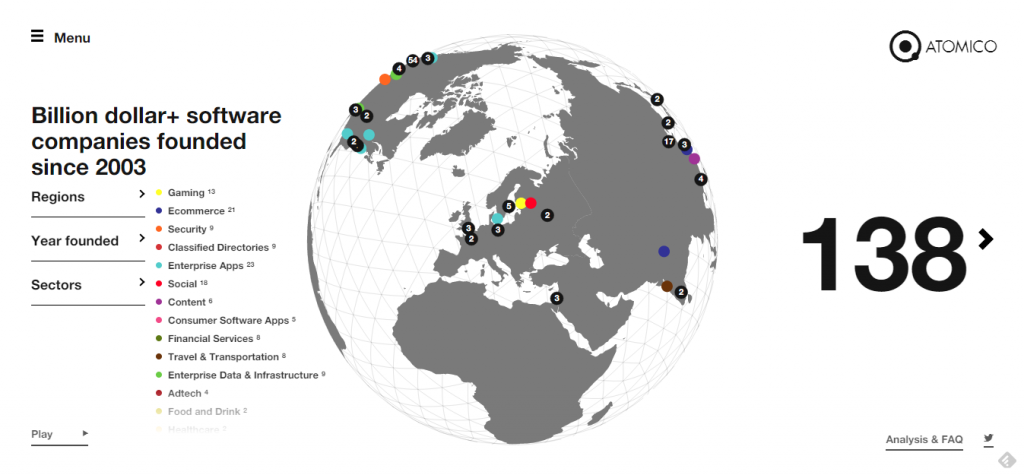Sections
Pick of the Week – Android Lollipop
Google finally released Android 5.0 Lollipop code to the Android Open Source Project (AOSP) and initial examination confirms it to be a massive release in terms of commits as befits a platform with purportedly over 5000 new APIs:
“The Android team has been saying all summer that this update is the biggest update in the history of Android. And looking at the number of commits – 128,680 – it definitely blows away all other versions of Android.”
Engadget reviewed the Nexus 9 build and highlighted how “so much of Lollipop is focused on making things more efficient and streamlining apps“. For them this is best exemplified by the new GMail 5.0 client which adds support for IMAP, POP and Outlook. CNET are also impressed with GMail 5.0 and integrated use of Material Design:

It’s not been entirely smooth progress for Google though with suggestions of a serious battery software defect in the initial drop of Lollipop to Nexus 5 owners causing a delay in rollout. Mobile platform software quality is of course very much in the spotlight in the aftermath of #updategate. In a key difference from Apple, however, Google test the water with updates by conducting incremental release to customers allowing them to analyse and then limit fallout from unforeseen issues:
“Google does their updates in rollouts, pushing the update out to small groups of users over the course of a week or two, this allows them to catch bugs like this early on and fix them before they affect all of their users.”
This initial wobble hasn’t deterred some OEMs from pre-announcing when their flagship smartphones will receive Lollipop. GigaOM summarised the current state of play. Samsung have been more circumspect but Sony, Motorola and LG have all made a commitment to provide the update to key portfolio devices. LG seemed to have beaten even Google to the punch with the G3 apparently already receiving an L update. For this to happen LG must have been working with the Lollipop code base on the inside as it were for months leading up to AOSP release date. HTC’s self-imposed 3 month timebox is probably more realistic:
We've received Android Lollipop code from Google, the clock starts now! HTC One (M8) and (M7) will be updated within 90 days! #HTCAdvantage!
— Mo Versi (@moversi) November 3, 2014
Even with such a public display of confidence, it pays to be cautious. ReadWrite built on the various OEM announcements to date to summarise the current known position. Their view was that even the most bullish of OEMs on the outside are unlikely to be releasing a high quality fully-tested and approved Lollipop update to existing KitKat based products any time soon:
So far, the earliest timeframes for non-Google devices seem to linger around the three-month mark. It’s not clear whether that includes the carrier testing phase or not. Either way, you’re not likely to be unwrapping a new Lollipop upgrade until at least next year.
Smartphones and Telecoms
- Vlad Savov in The Verge suggests that many smartphone OEMs increasingly rely on Qualcomm as a primary technology provider. The company has invested an estimated $30billion in RnD during 29 years. Today it has an unassailable lead in mobile technology over would-be competitors NVidia and Intel. Many leading end Android and Windows Phone peloton devices are powered by Snapdragon 800, 801 and 805 chipsets device features they talk up like Quick Charge are actually Qualcomm IP:
“The LG G2 and G3, the Sony Xperia Z1, Z2, and Z3, the Nexus 5 and 6, the HTC One of both 2013 and 2014, and every Samsung Galaxy variant to reach the United States are all built around a multi-core Qualcomm heart. Outside the Android realm, Windows Phone is exclusively reliant on Snapdragon processors, to the point where Microsoft directs potential phone manufacturers to the Qualcomm Reference Design as a guide on how to build their handsets.”
- Qualcomm are keen to extend their technology advantage to the emerging potential of Internet of Things as underpinned by their acquisition of CSR.
- Ericsson’s CEO Hans Vestberg has helped turn the company around over the last 4 years. He isn’t finished yet as he aims to “reinvent” the $38billion company to remain relevant in an increasingly connected Networked Society. Achieving that transformation would seem, as in Qualcomm’s case, to involve finding new sources of revenue for Ericsson from the Internet of Things.
Apps and Services
- Intercom offer an integrated environment for mobile product propositions to engage and communicate with users. This recent excellent Intercom blog article explains well how mobile apps as we have understood and used them to date are dying and being replaced by a new paradigm. Apps 2.0 are less about the app as an endpoint but rather as the configurator for a headless service built around card-based interactive notifications:
“The idea of having a screen full of icons, representing independent apps, that need to be opened to experience them, is making less and less sense. The idea that these apps sit in the background, pushing content into a central experience, is making more and more sense. That central experience may be something that looks like a notification centre today, or something similar to Google Now, or something entirely new.”
- The key enabler for this model is a system level notification framework and it’s worth noting that both Apple and Google have made significant changes to notification frameworks in their most recent platform releases accelerating this trend:
“We’ve moved pretty quickly from notifications as signposts, to containers (cards) that include content, and actions on that content.”
- Android Lollipop in particular is explicitly uses an independent rich standalone card-based model for notifications:

- Divergences between the ecosystem approaches are inevitable, however, meaning that app developers will have to maintain separate models for different platforms. John Gruber alluded to this in a post discussing Google’s emerging cross-platform app aesthetic observing that “Google’s iOS apps feel less and less like iOS apps with each major release“.
- Amazon announced that Prime customers will get “free unlimited storage” for photos using their unfair advantage in capacity to instantly raise the stakes for all competitors:

- Amazon have also introduced a new twist on the Bluetooth speaker with Echo which is an interesting attempt to add a voice assistant to the smart home hub, a Siri meets Sonos proposition. It’s also $100 cheaper to buy if you have a Prime account:
“Instead of being locked to your mobile device, Echo is a standalone speaker that’s meant to give you easy access to information such as the news and weather while at home (indeed, it needs to be plugged in to an outlet). It can also set alarms and timers, make lists or answer questions using sources like Wikipedia.”
http://youtu.be/KkOCeAtKHIc
- There are some potentially disturbing security and privacy implications with some arguing that Amazon one-click just went to no-click purchase. You’d need to be careful about what you say with an Echo round the house:
“With Amazon being omnipresent without even the need to reach for your smartphone, anything within earshot of Echo could very easily become an impulse buy.”
- Tinder are introducing a paid service Tier with what they hope will be a killer feature: “its Plus service will include an ‘undo’ feature that lets you revisit date candidates you’d previously ruled out.“

Asia
- Softbank’s $10billion investment in Snapdeal has shone a light on India’s startup ecosystem. Evidence from CB Insights suggests that the tech investment pendulum is swinging from China to India helping underscore some of the more bullish feedback from region:

- A challenge unique to China is that it only has one time zone across its vast land mass. The Atlantic ran an interesting piece outlining some of the problems that presents particularly in the far Western regions of the country where China’s Uighur population is concentrated.
- Xiaomi are seeking investment that values them at $40bn almost 13 times more than Lenovo paid for Motorola. The company doesn’t have an IP portfolio the size of Motorola’s so the source of such a high valuation is down to a very loyal fan base carefully built through novel approaches particularly the “train is leaving the station” sense of urgency built into their flash sales:
“Xiaomi’s real innovation then is its heavy use of the online flash sale, which allows it to minimize inventory risk — it sells out of how ever many phones it makes — which combines with the belief that someone with a Xiaomi product feels like he or she has earned it, instead of simply having purchased it.”
Enterprise and Cloud Computing
- HP’s decision to split its printer and PC division is a sort of corporate version of the trend towards “unbundling” and app constellations. It follows recent divestments by EBay and Symantec. Fortune believes that the underlying source of disruption here is cloud computing which is forcing incumbents new and old to make drastic changes to adapt to the new world. We haven’t seen anything yet is their message:
“That means we’re going to see the acquisition ‘arms race’ escalate, and number of new enterprise IPOs continue to grow. And not only will we see the legacy players engage in more acquisitions, but we will likely see acquisitions from some of the larger new incumbents — like Saleforce.com and Workday — as they seek to stay ahead of the curve.”
- Slack essentially provide an enterprise-friendly searchable group chat service targetted at SMEs. They’ve been wildly successful in 2014 to the extent that Slack is “the fastest growing workplace software ever“. The story of their success is an object lesson in how to build success from pain points within typical Enterprise workflow. They just had a $120million investment valuing the company at over $1billion.
/cdn3.vox-cdn.com/uploads/chorus_asset/file/631624/slack-desktop-integrations.0.png)
Big Data and Machine Learning
- Import IO provide tools to “turn web pages into data“. Unsurprisingly they believe that “integrated access to data, especially from the web, is going to be the most important technological advantage in the next 10 years.” They’ve just published a paper explaining why.
- Udacity are introducing a Data Science nanodegree off the back of their popular “ud359” Intro to Data Science course. It’s a development that aligns with the recent trend highlighted in the blog for MOOCs to move to provide specific tailored micro-learning. The nanodegree is intended to be accessible to a generalist tech audience with some experience of Python and basic stats. It seems to offer a great end to end combination of data wrangling, analysis, stats and visualisation training components built around well understood used Big Data resources such as the New York Subway transits and Enron email fraud datasets.
Smartwatches
- More evidence gathered by GigaOM to support a very steep price in excess of $4000 for the Gold Edition Apple Watch.
- Meanwhile HP have partnered with US fashion designer Michael Bastian on the luxury Chronowing which is positioned more at entry level Apple Watch prices between $349 and $649. It gets a nice review in The Verge:
“if you want a nice watch that happens to also alert you to new messages or emails, the MB Chronowing could be an appealing choice.”

- Will.i.am’s Puls stopwatch however gets a very poor review with thick inflexibility, a poor grainy screen and slow unintuitive operating system all equally panned:
“The Puls’ feels like a Kickstarter concept product that never should have made it to production.”

Wearables
- Another data point for the huge latent potential for smart clothing:
24% of millenials likely to buy smart clothing this year MT @UXcata: past, present, future of #wearables by @mtrends pic.twitter.com/NgDVapjHRT
— Pierre A Fournier (@pafournier) November 4, 2014
- To succeed, smart clothing will need to offer greater utility and convenience than ‘ordinary’ clothing without sticking out. A good example is LifeBeam’s $99 smart hat which GigaOM suggest represents the future of smart clothing:

- Engadget Extend’s “Wearables on the Runway” show, however, which purports to showcase tech and fashion fusion looks unlikely to be coming your way any time soon. The wearables on display here are anything but inconspicuous:

- Microsoft Band has been garnering really positive reviews since launch with both GigaOM and NYT praising the product while recognising a few rough edges notably around its functional rather than attractive design. Microsoft could have an hit on their hands given the breadth of their take on the health band:
“You would be hard pressed to find a wearable that does as many things as the Microsoft Band and that also works across platforms. The Pebble Smartwatch works on iOS and Android, but does not include the advanced fitness features of the Microsoft Band. The Jawbone Up and Fitbit Flex have apps on iPhone and Android, but do not do smartwatch-style notifications.”

- With Microsoft throwing down the gauntlet and Fitbit showing their cards with their new Surge, Jawbone chose a good time to unveil the Jawbone Up 3 its most sophisticated product to date and “the world’s most advanced tracker” albeit one that is still without any form of UI:
http://youtu.be/mRVrgQrkWWQ
- A key area of focus for Jawbone in the Up 3 has been continuous heart rate measurement:
“Most other wearables on the market rely on green LED sensors that have to be held close to the skin very carefully to detect your heart rate. The Up3, on the other hand, gets your heart rate by measuring galvanic skin response using the skin and temperature sensors in its armbands. At launch, the Up3 will be able to measure your heart rate when you’re at rest, but an update will eventually enable on-demand heart rate monitoring.”

- Jawbone also launched the Up Move a $50 Misfit-style wearable aimed at getting more users onto its personalised Smart Coach health insights platform which is the real key to growth for the business.

Bluetooth Smart Retail
- The importance of Bluetooth connectivity as an enabler for the Internet of Things is increasingly mainstream as highlighted by this recent NYT review article.

- The specific use of Bluetooth Low Energy (BTLE) to enable retailers to establish a new channel with consumers via in-store beacons is also increasingly well understood. The exploitation of their own retail space allows retailers to potentially disrupt existing publishers:
Retailers will become publishers w/targeted msging & shopper engagement initiatives #digital @mtrends #NimbusIGNITE pic.twitter.com/8zjtdFVvRB
— Sabrina Rodriguez (@sabrodriguez1) November 4, 2014
- The key to unlocking the potential of beacons would be the establishment of a platform-level play that moves the field beyond today’s collection of niche mobile apps and various combinations of beacon hardware which Aislelabs review in this comprehensive report. Apple are clearly in prime position from a platform perspective and the combination of iBeacon and Apple Pay could provide the killer shopping experience albeit one built on iOS devices. More broadly:
“To unlock the massive potential of beacons, we need an open network much like GPS: ubiquitous, widely accessible, and easy to use and implement through built-in platform support. Beacons must form a new ubiquitous layer that powers context in order to most effectively serve the end-user. Instead, individual companies are currently creating the equivalent of small, private networks that will have limited value and use.”
![]()
- Noke is another innovative Bluetooth use case, this time in the guise of a BTLE padlock controlled from your smartphone:

Innovation in Hardware
- German researchers have created a “robotic scallop” designed specifically for swimming through viscous human bodily fluids. Unlike 1960’s classic Fantastic Voyage, humans need not apply for this journey:
- Hackaday demo of a system involving a webpage on a tablet transmitting Javascript via the headphone socket to a Javascript interpreter running on an Espruino Pico:
- GigaOM review of the latest batch of haxlr8r startups: “10 early-stage companies that were able to spend 3.5 months in Shenzhen, China, building a working prototype“. There is some diversity but also a lot of focus on robotic toys like Robo:

Programming
- Pliny is an $11million DARPA program to develop a system billed as “autocomplete for programmers” backed by a huge database of extant open source code:
“Its developers describe it as a repository of terabytes upon terabytes of all the open-source code they’ll find, which people will be able to query in order to easily create complex software or quickly finish a simple one.”
Work and Culture
- Atomico invest in innovative technology companies. Founder Niklas Zennström was CEO of Skype prior to Microsoft’s acquisition. Truecaller who we’ve covered before in this blog are one of their portfolio companies. They have an interesting interactive infographic outlining all the billion dollar software companies created globally since 2003. There are three entries in their classification for the UK: Wonga, Monetise and Zoopla covering payday loans, mobile money and property. Somehow that seems to speak volumes about modern Britain.
- Sloppy emails are considered harmful in this LinkedIn opinion piece which offers some basic scripted and therefore automatable approaches for dealing with them:
“To craft more effective email messages, answer the following four key questions in every single email you send – who, why, what and how.”
- Workplace stress is rising in chief part due to increased workload and interpersonal issues according to this evidence from the US Institute of Stress no less. At the same time tracking and analytic technology is enabling a new digital form of Taylorist total monitoring in the office though no amount of inspection seems to be able to pick out. Given that backdrop, it’s refreshing to read a contrarian article exploring the rise of often surreptitiously conducted ‘cyberloafing’ practiced by employees who are disengaged from their employment. It’s one response to another growing inequality at work:
“Our economy produces inequalities in income and job security, but also, we should acknowledge, in stimulation and substance.”
- Learning on the job often seems to be the only option available for knowledge workers to pick up new skills and make day to day work more interesting. This HBR article suggests that the setting aside of learning time at work is suffering neglect partly as a consequence of a variety of new pressures on the workforce some of which were outlined above. Collectively companies are in denial about the situation:
“Everyone says that learning is essential for companies’ success—and for your own. And yet, on a daily basis, who cares for your learning? No one. People care about what you have learned. They care about your results. Learning is great as long as you do it quietly, in your own time.”
- Most people working in low end jobs don’t have the luxury of cyberloafing or learning opportunities. The reality of life in the precariat is beautifully captured in this tale of woe exploring a US labour market where disaster is often just a single unfortunate life event away:
“In this new gilded age, where profit takes precedence over people, and commerce takes precedence over art; where a CEO earns 331 times the salary of the average worker, and a company going public feels no compunction about ordering massive layoffs to appear lean in the eyes of investors; where a woman still earns only 78 cents to every man’s dollar, and where access to health insurance—though much improved—still carries strange loopholes that leave some of us uncovered for months; where none of us is able to save nearly as much as we should, despite cutting back on everything, including necessities like food and shelter; where affordable childcare, universal daycare, and paid maternity leave are fantasies that only happen in other countries, not ours; where a college education requires our children to take on the kind of massive nooses of debt that will render them too cash-poor to have any future material goods in need of organizing and containing, most of us are just a single job loss, a single medical diagnosis, a single broken marriage removed from a swirling, chaotic, wholly uncontained abyss.”
